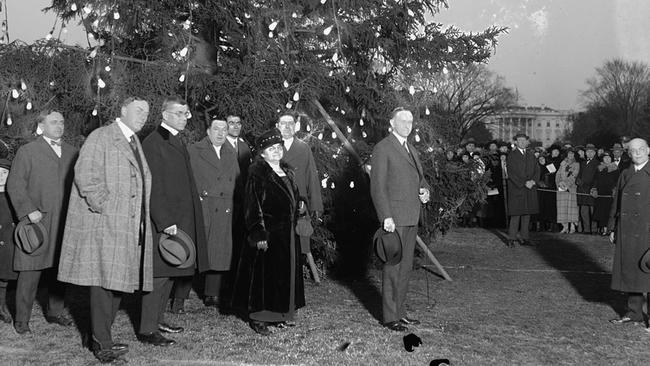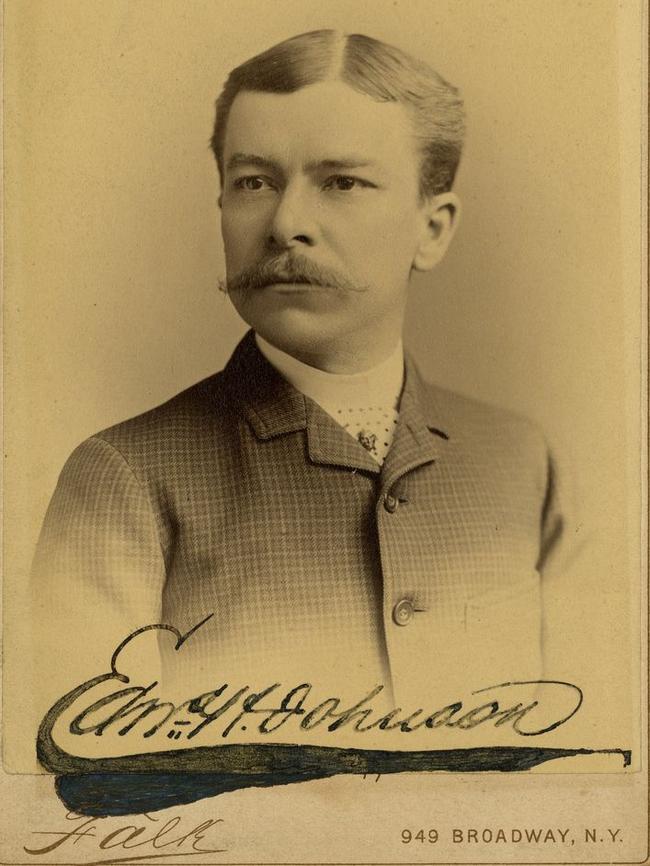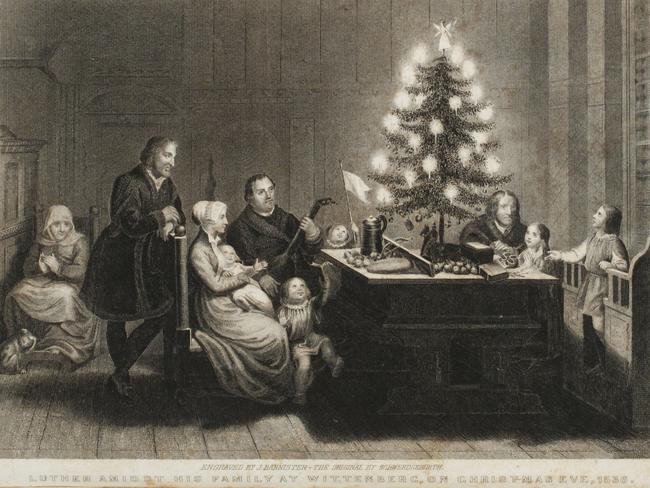Inventor Edward H. Johnson created first electric Christmas lights
When Edward H. Johnson strung together some coloured bulbs and wrapped them around a pine tree 135 years ago he brought joy to many but frustration to some.

Today in History
Don't miss out on the headlines from Today in History. Followed categories will be added to My News.
THEY say necessity is the mother of invention but, in 1882, festivity became the inspiration for the invention of something that made the Christmas season literally brighter.
On December 22 that year, 135 years ago today, Edward H. Johnson strung together 80 multicoloured lights and wrapped them around a pine tree, thereby inventing Christmas tree lights, the source of so much joy and frustration (for those who need to untangle them).
Johnson was no ordinary tinkerer, but was the man who gave Thomas Edison his start in the tinkering business. He later became a partner in the Edison Electric Light Company and it was in his capacity as vice president and one of Thomas Alva Edison’s chief inventors that he created the decoration that earned him a place in Christmas history.
Since ancient times people have decorated evergreen trees, or brought them into their homes around the time of the Winter Solstice (December 21 or 22). It was a symbol of life continuing in the season when everything seemed to be dying.

Fire and lights were also a major part of many solstice festivals, because the date marks the moment when the daylight hours are shortest and from that point begin to slowly get longer as time marches toward the equinox in March, when day and night are equal. For many ancient people the winter solstice was seen as the rebirth of the sun and lighting fires or candles symbolised the sun hadn’t deserted the people struggling through bleak winter days.
Centuries later when Christians began dedicating the season to the birth of Jesus they found that the symbolism applicable to Christianity as well. But it was not until the 16th or possibly the 17th century in Germany that lighting an evergreen tree indoors as a Christmas tree became an established tradition.
According to the legend German priest Martin Luther, in about 1538, was walking in the forest and looked up at the evergreens to see stars sparkling through the branches. He sought to emulate that image by bringing a tree indoors (by then already an ancient tradition) and decorating it with candles, perhaps to symbolise the light of Jesus and the promise of eternal life. However, the first verifiable reference to a Christmas tree lit with candles appears in a 1660 letter by the German woman Liselotte von der Pfaz, daughter of a German prince.

The tradition was popularised in Britain by Queen Victoria who was depicted with her husband Albert and their family gathered around a tree decorated with candles in an 1848 edition of the London Illustrated News.
German migrants to the US took Christmas trees there and by the 19th century they had caught on. US president Franklin Pierce put the first one in the White house in 1856. But while candlelit trees caught on, many of them also caught fire.
Edward Johnson sought to create a less hazardous way of marrying lights to trees. Born in 1846, he worked on the railways as a young man, assisting general William Jackson Palmer. In 1871 Palmer was sent to manage the Automatic Telegraph Company. He took Johnson who employed the promising 24-year-old Edison as an assistant.
When Edison formed his own company, Johnson went into partnership with him. Johnson did some of the tinkering but also promoted Edison’s inventions.
But in 1882 Johnson replaced the dangerous candles with light bulbs, hand wiring a string of 80 red, white and blue bulbs, each about the size of “an English walnut”. The lights even blinked on and off in “a continuous twinkling of dancing colours” according to one newspaper.
But the first strings of lights were pricey, at $US12, equivalent to about $300-$400 in today’s money. At that time few homes were wired for electricity, so most people would have needed to buy a generator to run them. The early versions also needed to be wired by a professional electrician.
Johnson’s invention took a while to take off. In 1894 US president Grover Cleveland gave it a boost by decorating a Christmas tree inside the White House with electric lights.
Pre-assembled lights came on the market in 1903 and by the time Johnson died in 1917, more homes had electric lighting. But in the 1920s the mass production of light bulbs made Christmas lights even more accessible. In 1923 US president Calvin Coolidge inaugurated the annual custom of lighting up the national Christmas tree on the White House lawn, giving another boost to the tree lights.
But over the course of the 20th century more improvements were made to the technology, including the invention in 1956 of a shunt, which allowed a string of lights to continue shining if one bulb burnt out.
Today trees are mostly strung with LED lights, but they owe a debt to Mr Johnson.
Originally published as Inventor Edward H. Johnson created first electric Christmas lights



